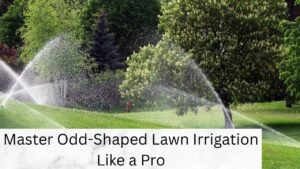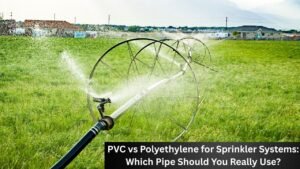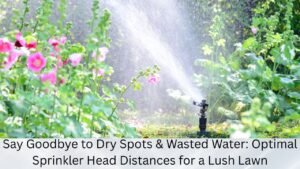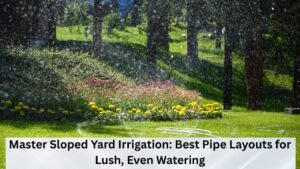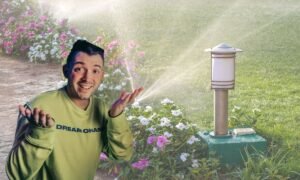If you’re considering installing a sprinkler system in Wichita, KS, you might be wondering how it will affect your monthly water bill. Understanding the potential impact of a sprinkler system water bill Wichita is crucial for budgeting and making a smart investment.
This guide will help you grasp the financial implications of a sprinkler system, explore different types of systems, and offer tips to keep your water usage in check.

The Impact of a Sprinkler System on Your Water Bill
Understanding Water Consumption
I explain how understanding water use helps design more efficient irrigation systems. The youtube video below A Holistic Understanding Of Water Uses & Consumption by Imemflo Filtration Pvt. Ltd. (YouTube, September 6, 2022) explores water consumption patterns and offers insights for smarter, sustainable watering practices.
Sprinkler systems can significantly influence your water usage. Here’s a breakdown of how different factors affect your water bill:
- Lawn Size: The larger your lawn, the more water it needs. For instance, a typical Wichita lawn measuring around 5,000 square feet may use about 2,500 gallons of water per week. If you have a larger lawn, such as 10,000 square feet, your water usage could double, leading to a substantial increase in your water bill.
- Type of Sprinkler System: Different systems have varying impacts on water usage:
- Traditional Sprinkler Systems: These systems often use more water. For example, a traditional system might increase your water usage by up to 10,000 gallons per month during the summer.
- Rotary Sprinkler Systems: These are more water-efficient and can save up to 30% more water compared to traditional systems. This efficiency can reduce your monthly bill by $20 to $50.
- Drip Irrigation Systems: The most efficient option, these systems deliver water directly to the plant roots, cutting water usage by up to 50%. Although installation costs are higher, you might save $20 to $40 on your monthly bill.
- Local Water Rates: Wichita’s water rates play a significant role in determining your increased costs. As of the latest rates, you can expect to pay approximately $4.50 per 1,000 gallons of water. Thus, a rise of 10,000 gallons in your monthly consumption could add around $45 to your bill.
Cost Breakdown of Different Sprinkler Systems
Installation and Maintenance Costs
Understanding the cost of installing and maintaining various sprinkler systems will help you make an informed decision. Here’s a detailed breakdown:
| Sprinkler System Type | Installation Cost | Annual Maintenance Cost | Impact on Water Bill |
|---|---|---|---|
| Traditional Sprinkler | $1,500 – $3,000 | $100 – $300 | +$30 – $60 per month |
| Rotary Sprinkler | $2,000 – $4,000 | $150 – $250 | +$20 – $50 per month |
| Drip Irrigation | $2,500 – $5,000 | $200 – $400 | +$10 – $30 per month |
Long-Term Investment
While traditional systems have lower initial costs, rotary and drip systems offer better water efficiency, which can translate into long-term savings.
For example, although a drip system costs more to install, it can significantly reduce water consumption, ultimately saving you money over time.
Estimating Your Water Bill Increase
To get a precise estimate of how much a sprinkler system will add to your water bill, follow these steps:
- Calculate Your Current Water Usage: Review your recent water bills to understand your baseline usage.
- Determine Additional Water Consumption: Based on the size of your lawn and the type of system, estimate the additional water usage. For instance, a 5,000-square-foot lawn with a traditional system might increase your water usage by 10,000 gallons per month.
- Apply Local Water Rates: Multiply the additional gallons by Wichita’s water rate. For example, 10,000 gallons at $4.50 per 1,000 gallons equals an additional $45 per month.
Sample Calculation:
- Lawn Size: 5,000 square feet
- System Type: Traditional
- Additional Water Usage: 10,000 gallons/month
- Local Rate: $4.50 per 1,000 gallons
- Additional Cost: 10,000 gallons x $4.50 / 1,000 = $45 per month
Consider Water-Saving Programs
Wichita may offer rebates and water-saving incentives that can offset the cost of installing an efficient sprinkler system. These programs often reward homeowners for using smart controllers, drip irrigation, or systems designed to reduce runoff and waste.
For even greater savings, don’t forget about seasonal efficiency. Winterizing your system at the right time prevents freeze damage and saves money on future repairs. Check out this state-by-state winterization timing guide to prep your Wichita system before the first freeze hits.
Always check with your local water authority to see if you qualify for rebates, bill credits, or installation discounts tied to conservation efforts.
Tips for Efficient Water Usage with Sprinkler Systems
I share practical tips for cutting water waste while keeping lawns healthy. The youtube video below Sprinkler Tips to Save Water by GreenCO Colorado (YouTube, May 30, 2013) provides simple, actionable advice for smarter irrigation and lower water bills.
To minimize the impact on your water bill and make the most out of your sprinkler system, follow these water-saving tips:
- Water Early or Late: Water your lawn early in the morning or late in the evening to reduce evaporation. This simple adjustment can conserve water and lower your bill.
- Adjust for Weather: Use weather sensors or manually adjust your system based on recent rainfall. If it has rained recently, cut back on watering to avoid overuse.
- Use Smart Controllers: Smart controllers help fine-tune water use based on real-time weather and soil data. Learn how to optimize them in this smart sprinkler settings guide.
- Regular Maintenance: Inspect your sprinkler system regularly for leaks or clogs. Even small leaks can waste significant amounts of water, leading to higher bills.
Visual Aid: See the infographic below for tips on adjusting sprinkler heads and using smart controllers effectively.
Conclusion
Installing a sprinkler system in Wichita can enhance your lawn’s health but comes with an increase in your water bill. By understanding how lawn size, sprinkler type, and local water rates affect costs, you can make a more informed decision. Efficient systems like rotary or drip irrigation may have higher upfront costs but offer long-term savings through reduced water usage.
For personalized advice and to explore the best options for your home, contact a local landscaping company. They can provide tailored recommendations to help you manage both your lawn’s needs and your water expenses effectively.
